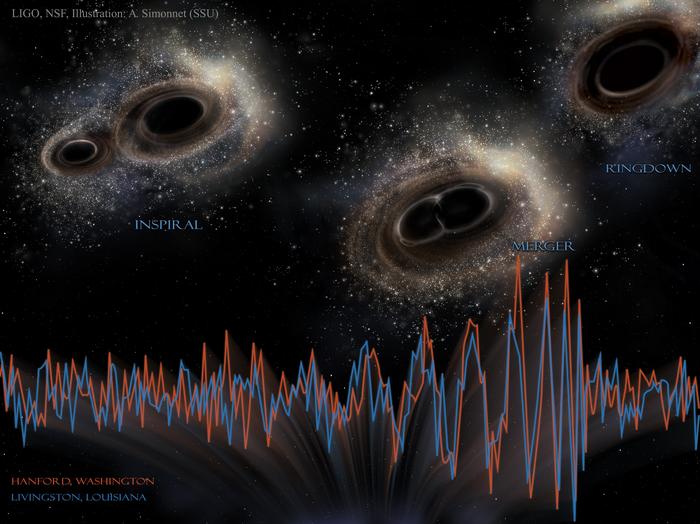The dawn of the gravitational wave astronomy era has ushered in groundbreaking advancements in our understanding of the cosmos. The observations of ripples in spacetime caused by cataclysmic events like colliding black holes and supernovae have opened a new realm of possibilities for researchers and scientists interested in exploring the universe at a deeper level. Historically, gravitational waves were postulated over a century ago by Albert Einstein himself, yet only recently, in 2016, did humanity achieve a successful detection of these elusive phenomena through the use of highly sophisticated instruments.
However, creating instruments capable of detecting such subtle signals presented a formidable challenge, engaging researchers and engineers in a complex task that demanded precision and innovation. The conventional methods employed to design these instruments often fell short of unfolding the full potential laid out by Einstein’s theories. To surmount this challenge, a team at the Max Planck Institute for the Science of Light (MPL) turned to the promising field of artificial intelligence (AI), harnessing its capabilities to inspire novel designs that could redefine the future of gravitational wave detectors.
Dr. Mario Krenn, leading the research group known as the “Artificial Scientist Lab” at MPL, embarked on a quest to utilize AI to engineer innovative solutions for interferometric gravitational wave detectors. Interferometry, a powerful measurement technique that relies on the interference of waves, proved essential for detecting gravitational waves. With an algorithm dubbed “Urania,” Krenn and his team aimed to transcend the traditional boundaries of design, exploring vast design spaces that humans, by nature, find difficult to navigate.
The crux of Urania’s function lies in reframing the design challenges into a continuous optimization problem, leveraging modern machine learning methods to identify optimal solutions. Remarkably, their collective efforts yielded numerous designs that stood out for their potential to outperform the currently known next-generation detectors. This breakthrough suggests a radical shift in how researchers could enhance the sensitivity and range of current detection technologies, potentially allowing for the observation of gravitational waves from even more distant and faint cosmic events.
The findings reveal that AI isn’t just a tool for automating tasks but rather an intelligent partner capable of recognizing patterns and proposing solutions that may elude human architects. The designs offered by Urania range from familiar techniques to unconventional geometries that might challenge existing paradigms of detector technology. As Krenn articulates, the collaborative endeavors of humans and AI have unveiled new pathways, raising crucial questions about what might be beyond human comprehension.
Over the course of two years, the research team was astounded by the ingenuity exhibited by the AI algorithm. Not only did it rediscover established methodologies, but it also charted new territories that scientists had yet to explore fully. The researchers went beyond merely expressing admiration for the AI’s outputs; they undertook the important task of decoding the AI’s design logic, striving to understand the principles that informed each novel proposition. In doing so, they unearthed a variety of advanced conceptual templates that promise to expand the horizon of gravitational wave research.
One of the most inspiring aspects of this study lies in the establishment of a “Detector Zoo,” a compilation of the top 50 detector designs uncovered by Urania. This repository serves as a valuable resource available to the broader scientific community, presenting new avenues of exploration that have the potential to revolutionize the field of gravitational wave astronomy. By making these designs accessible, Krenn and his team invite global collaboration aimed at enhancing detector technology through shared knowledge and collective ingenuity.
The implications of this research stretch far beyond the immediate applications of gravitational wave detection. As Krenn observes, we are entering an era in which machines can offer super-human solutions to complex scientific problems. The insights derived from AI-led explorations will undoubtedly beg further inquiry, nudging scientists towards new paradigms in both experimental and theoretical physics. If AI can help us uncover innovative designs today, it begs the question of what revolutionary discoveries lay just around the corner.
The ongoing dialogue between AI and human researchers suggests a paradigm shift, wherein collaboration—not competition—will pave the way for advanced scientific breakthroughs. As the scientific community grapples with the integration of AI into research methodologies, it must also confront the philosophical ramifications of machine intelligence in decision-making processes. What does it mean for humanity when machines begin to discover solutions that are beyond our traditional comprehension?
Ultimately, this entanglement of artificial intelligence with the exploration of the cosmos underscores the vital role that innovation plays in propelling humanity toward unprecedented frontiers of knowledge. As scientists continue to decode the signals from the universe, the groundbreaking work being conducted by researchers like Krenn at the Max Planck Institute for the Science of Light might just be the vanguard of a new age of discovery, driven not only by human ambition but also by the very machines we create.
As we stand on the brink of what could become an extraordinary era in cosmic research, the implications of this work extend into numerous scientific realms. Whether examining the nature of black holes, the lifecycle of stars, or the fundamental structure of spacetime itself, these AI-discovered designs promise to provide deeper insights that could forever alter our understanding of the universe. The future beckons—a future illuminated by the power of synergy between human intellect and artificial wisdom.
Subject of Research: AI-based designs for interferometric gravitational wave detectors
Article Title: Digital Discovery of Interferometric Gravitational Wave Detectors
News Publication Date: 11-Apr-2025
Web References: http://dx.doi.org/10.1103/PhysRevX.15.021012
References: None
Image Credits: Aurore Simmonet (Sonoma State University), Courtesy Caltech/MIT/LIGO Laboratory
Keywords
Gravitational Waves, Artificial Intelligence, Interferometry, Cosmic Events, Detector Design, Scientific Innovation, Max Planck Institute, Machine Learning, Astronomy, Black Holes, Cosmic Exploration, Detector Zoo.




